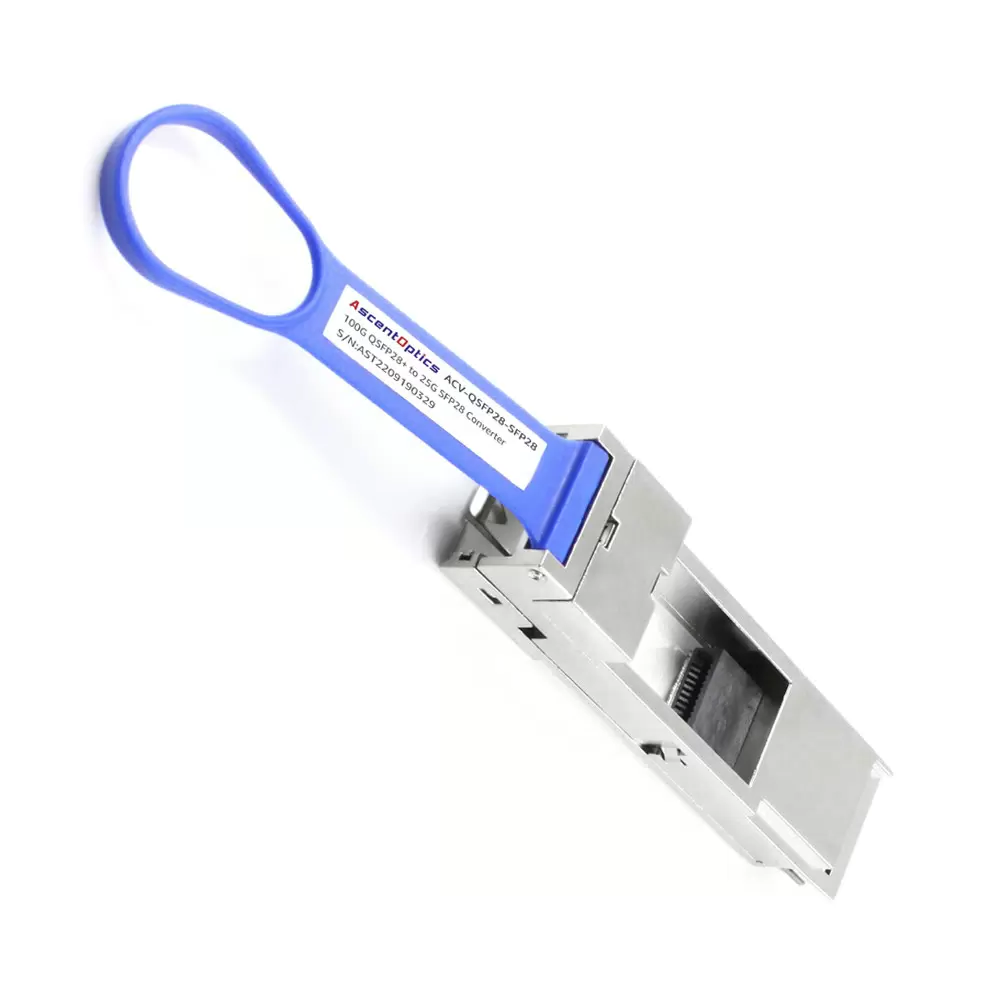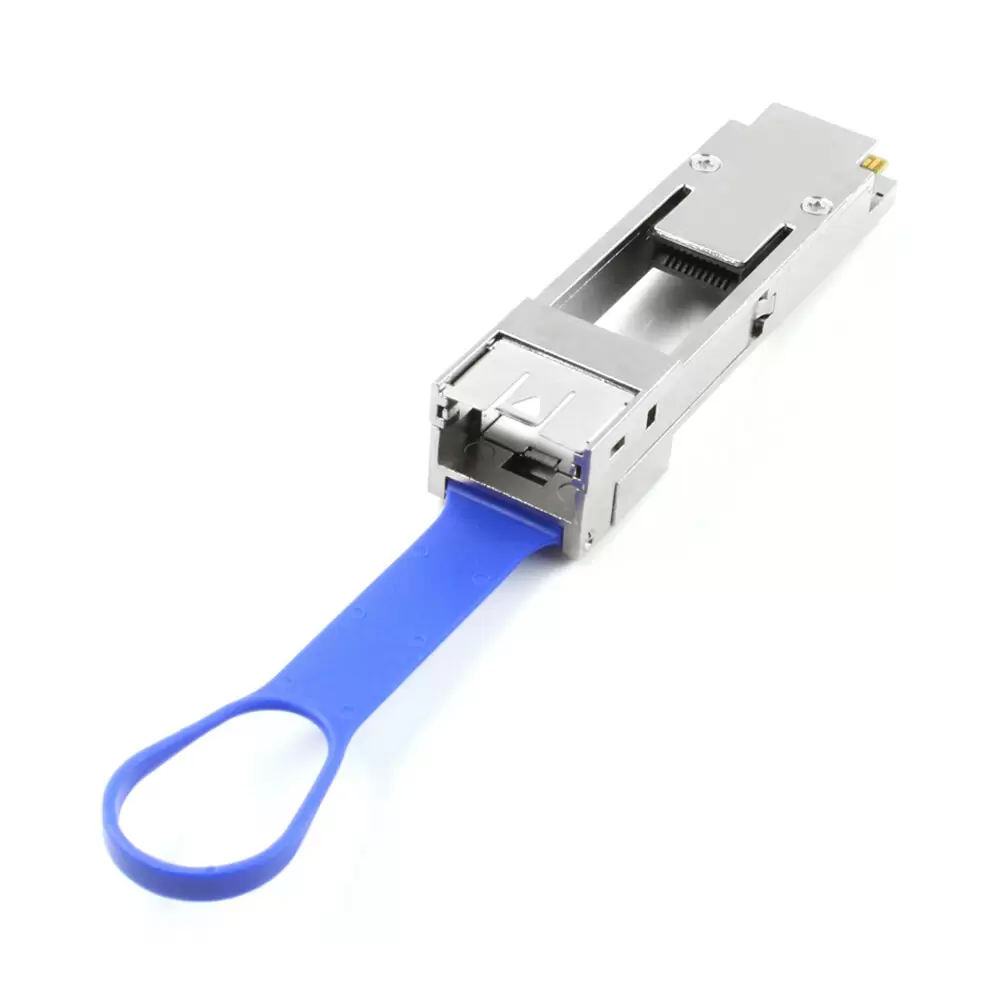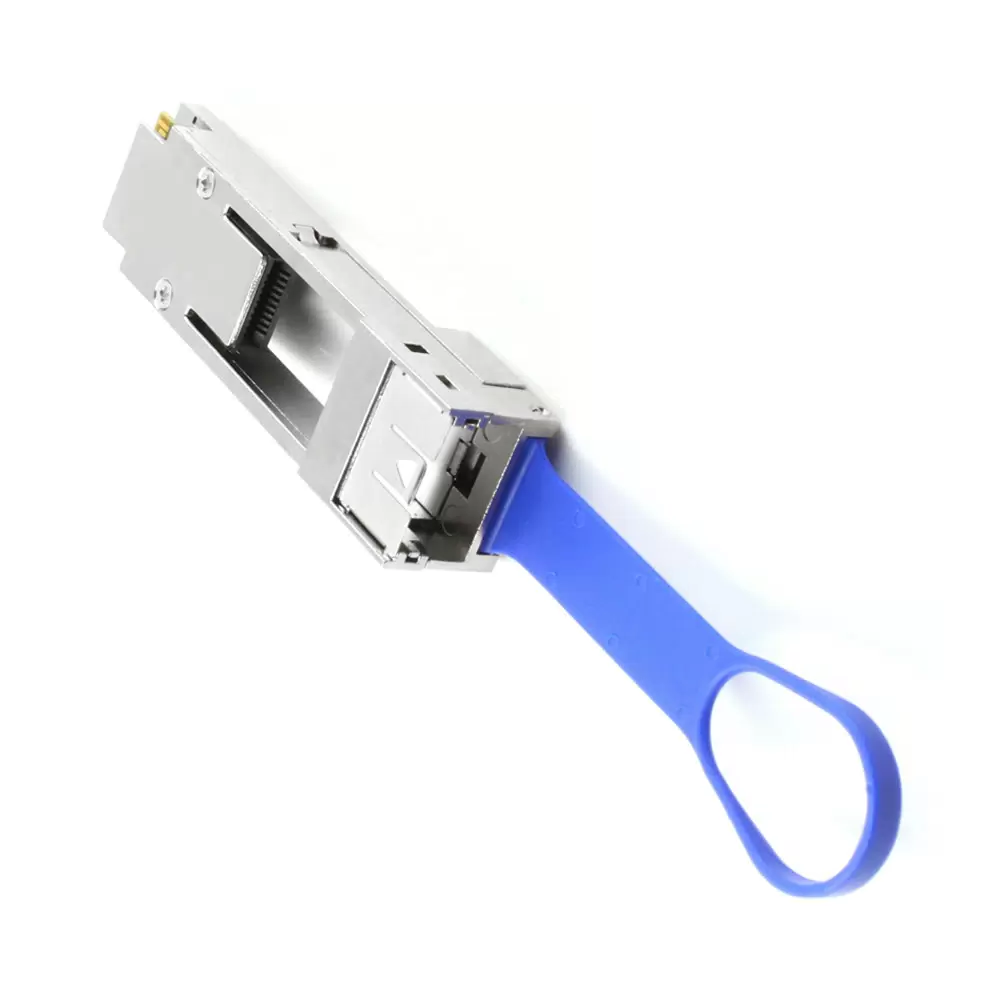The communication networking sector has brought in networking frameworks vastly different from the traditional ways of doing things. These newer ways are owed to the increase in innovation aimed at economies of scale, especially in data centers. Commercially, networking professionals have found adaptability in using the Mellanox MAM1Q00A-QSA28 adapter, which integrates both QSFP28 and SFP28 interfaces at the same time. This is achieved by wiring up SFP28 connections on the desired switches due to migration from SFP28 installations. This paper critically evaluates the measures of performance and the impact of Mellanox MAM1Q00A-QSA28 in modern integrative networking.

The Mellanox MAM1Q00A-QSA28 is an adapter module that provides the conversion of an SFP28 into a QSFP28 port which provides new flexibility in how the network is configured, and how resources are used. It is built for high-speed data environments supporting 25GbE networks and the already existing infrastructure making it’s very helpful for easy and cheap network building.
Architected with various features, the Mellanox MAM1Q00A-QSA28 adapter module enhances the performance in high-speed data settings. This adapter is compliant with the IEEE 802.3by standards, which guarantees the building of 25GbE equipment and conforms to both the 802.3bm and 802.3bj networks. The module is ruggedized and miniaturized, which ensures that the wattage utilization never exceeds 1.5 watts, a key feature for optimizing energy in data centers.
The device manages an ambient operational temperature ranging from 0degree Celsius to 70 degree Celsius allowing the device to survive different environmental conditions. Also, it supports a data throughput rate of 25.78125 Gbps for a single channel which eases and increases the speed of data transfer over networks. The device also makes integration into pre-existing networks easy by using fiber or copper wiring based on what the infrastructure requires.
The MAM1Q00A-QSA28 has no major drawbacks as it is able to minimize the loss in packets, hence maintaining low latency while guaranteeing good quality of the signal, making it best suited for signal-hungry applications. The ever-widening compatibility of the device with the various types of network equipment leads to easier and less daunting management tasks, thus guaranteeing efficient operations and a lower overall cost of the network throughout its lifetime.
Mellanox Technologies has advanced network-boosting capabilities in its features. One of the most important components is its implementation of RDMA over Converged Ethernet (RoCE), which alleviates CPU-associated overhead and delays, hence maximizing efficiency and throughput in data-centric settings. Further, Mellanox has inbuilt sophisticated quality of service (QoS) capabilities in its devices which ensure sound and effective management of data traffic across networks. Also, even devices purposed for commercial use with enhanced security protocols like secure boot and hardware-based encryption protect the core of the network and make it less likely for breaches to take place. Conclusively, the robustness and flexibility of Mellanox technologies stand it up as one of the most important components in future data centers within a business with massive potential for seamless expansion and management that would support changing business requirements.
The configuration for 100G to 25G is economical and efficient since it provides a means to transition from a 100 Gigabit Ethernet (GbE) to a 25 GbE, which is highly relevant to any contemporary data center and enterprise network. This configuration makes use of breakout cables or modules that logically split a single 100G port into four different 25G lanes, as reported in most recent research and white papers. As a result, the cost efficiency of the existing networking stack is also enhanced. Even technical considerations indicate that a considerable number of data centers gain lower operational costs in terms of energy and thermal energy used to control when they operate on 25G rather than 100. This setup is particularly beneficial for large-scale distributed computing architecture since it provides up to 25% additional cost-effectiveness together with dynamic data flow without any performance impairments. Furthermore, the implementation of new optical transceivers and the improvement of switching technologies make this conversion easier and more efficient in terms of speed and connection stability, which is crucial for high-bandwidth applications.

The QSFP28 to SFP28 adapter converts one Quad Small Form-factor Pluggable 28 into four Small Form-factor Pluggable 28 ports. This is done using a special connector that facilitates efficient electrical signal routing across interfaces. The complex interconnections used within the adapter facilitate lower return loss and crosstalk and help enhance the system’s performance under different data transmission scenarios. Most importantly, this combination supports their deployment use for effectively expanding and upgrading modern data center networks.
The QSFP28 to SFP28 adapter is designed in a way that ensures it can be used with Mellanox networks as well as the major networking equipment or can be further distributed with the expansion of the networks. This is made possible by the adapter conforming to standard specifications, which include, but are not limited to, facets 802.3by for 25G Ethernet and SFF-8665 standards for QSPF modules. Such standards make it almost certain that the adapter will work effectively within Mellanox protocol, providing a means for robust data services while at the same time ensuring adequate signal quality across the networks.
Broad compatibility testing indicates that the adapter retains key functionalities that are particularly important within the scope of the Distributed Computing Environment, some of which include RDMA over Converged Ethernet (RoCE) as well as RDMA. These functionalities have great potential in decreasing CPU workload, which in turn improves speed. Also, performance metrics showed that Latency was not greatly affected when users chose to hook their Switches with the adapter, and throughput remained at about five percent of non-native QSFP28 connections. In addition, the flexible structure of the adapter allows it to be coupled with a variety of other components of systems offered by manufacturers so that upgrading the infrastructure of the data centers does not require too many changes. So, this prompted such adaptability, making the QSFP28 to SFP28 adapter an integral part of QoS provision in the scaling and performance enhancement of networks.
Employing transceivers in networks of high speed provides a multitude of benefits that render them indispensable components of contemporary networking technologies. These transceivers help transmit and receive data efficiently by changing the electrical signals to optical signals, reducing signal losses and improving the quality of data transmitted over long distances. The factors that are worth noting are their ability to utilize high bandwidth and to transmit and receive high-speed data rates which for instance, in some instances, such fiber optics technology recently developed is noted to reach 100 Gbps or more Anyhow, transceivers are mostly standardized and can be replaced on the fly without bringing the network down making maintenance and upgrading of systems straightforward. It has been found that the use of sophisticated transceivers cuts down the power requirements by about 40 percent when compared with the use of the old copper wires-based systems. Time and again some members of a consortium have been working towards bringing about the use of standards suitable for making transceivers even QSFP-DD and SFP-DD. These improvements offer the promise of better and wider use by growing volumes of data centers with high requirements in throughput and latency.

The Mellanox MAM1Q00A-QSA28 adapter facilitates 100G to 25G conversion, making integration into established network frameworks simple while not requiring total replacement of equipment. This conversion can take its place as an integral part of bandwidth management by matching the capacity offered with the demand imposed by particular applications or services. Furthermore, it is relatively inexpensive, enabling significant reductions in capital expenditures on hardware upgrades without performance loss. The conversion, on the other hand, enhances network elasticity by providing smooth cross-functionality of varying standards and devices. As the need for more flexible and dynamic network solutions grows, such conversion is a great step toward more robust and ready-for-future network designs.
Economic efficiency maximization in optical networks is largely achieved through the implementation of cost-saving technologies. The adoption of cutting-edge photonics, such as the QSFP-DD and the SFP-DD standards, enables improvement of the use of existing networks, and physical overhaul requirements are avoided. This is facilitated by the adoption of network transceiver interfaces such as the Mellanox MAM1Q00A-QSA28, which reduce costs through effective matching of operational networks of different speeds without the need for large-scale substitutes.
In terms of reliability, the availability of the networks is higher when provided with optical networks due to the lack of electromagnetic interference and absence of excessive signal depreciation over large distances, ensuring that the networks are always available for use. The robust nature of the fiber optic cable also helps minimize maintenance and downtime of the network, thus assisting in its reliability. It follows that such efficiencies contribute to greater network availability particularly in high data environments where the purity of data transmission and speed of transmission are essential. This combination of low costs and high availability further demonstrates the competitive positioning of optical networks within the IT ecosystem.

In considering the use of direct attach and adapter converter modules, quite a handful of important aspects need to be considered in order to ensure that the network’s performance and level of expansion are optimal. This eliminates long setup processes that require extensive configurations as most of these modules are plug-and-play, which adds to the efficiency of operation. Certain devices, such as the adapters for the QSFP+ to SFP+, have wide diversity when it comes to compatibility, aiding the integration of the module into the preexisting systems and formats. They are also hot, meaning that one can substitute or add a device without having to eliminate a certain network service, thus ensuring the reliability of the systems in use.
Direct attach cables (DAC) are primarily employed for interconnections at shorter distance ranges, they enable better energy efficiency and low latency thus considering their application in high speed data centers. These reduce the amount spent on materials and operational services for a set up which does not necessarily require long range connectivity, more importantly they are cheaper than their optical tel transceivers. They have a strong enough DAC design that is resilient to physical pressure which enables the DAC to work well in environments where data transmission is high. Looking at performance characteristics and evaluated specifications, the organizations are able to use these components in a form that achieves the desired performance, reliability, and cost-effective configuration of the upgraded optical networks.
Networking infrastructure designs achieve maximum performance by following the Ethernet protocol Boosting Bandwidth & Network Performance Using Standard Ethernet Protocols, which comes highly recommended by leading technology industry resources. To begin with, it is essential to determine the appropriate Ethernet standard, as options such as Fast Ethernet, 10/40/100, and Gigabit Ethernet require different bandwidth and speed capabilities. In the case of high throughput networks, the latest IEEE 802.3 standards are utilized with the help of Cat6a or Cat7 cabling, which significantly improves data transfer rates and cross-talk suppression. Another key factor to consider is to achieve effective traffic management via VLAN-based network segregation as it reduces network congestion and improves the overall traffic flow. It is also important for network managers to keep updating software and hardware elements of the system to remove weaknesses and improve the system’s quality and functionality in accordance with the developing requirements. By integrating these practices and policies, organizations can operate their networks effectively and keep available a potential for advanced networking equipment in the future.
The installation of the right cable appropriate to the QSFP28 port is fundamental to data transmission and compatibility. It is necessary to choose cables that meet the high-speed data requirements since the QSFP28 interfaces are 100 Gigabit Interfaces. DAC cables are best for short connections within 7 meters, and they are quite economical and have low latency. AOCs, on the other hand, reach 100 meters, and they are appropriate where there is a high possibility of electromagnetic interference. Single-mode fiber is most appropriate for long-reach applications since it spans over 10 kilometers. In making a decision, the latest IEEE standards and the required distance, as well as environmental conditions for the installation, should be observed to enhance compatibility and performance.

The adapter Mellanox MAM1Q00A-QSA28 is classified as a transceiver module that functions effectively in conjunction with SFP28 ports and only requires basic knowledge of its functionality since ports of QSFP28 devices can be converted into SfP28 ports. This is an important inclusion in this paper as identification of other compatible products would be important in the network optimization process and the integration of various ruses. Here is a comprehensive list of compatible products for Mellanox MAM1Q00A-QSA28:
Optical Transceivers:
Networking Devices:
Cables:
Adapters and Converters:
Every Mellanox MAM1Q00A-QSA28 has what it takes to succeed in a given networking context, these compatible products have great performance as well as good data handling attributes. It is worth mentioning that before using these products it is recommended to check whether they are optimal for a given particular network’s specifications and external conditions.
As stated by some researchers, MSA (Multi-Source Agreement) compliance is essential for the proper functioning of a network comprised of devices from different manufacturers. First and foremost, MSA compliance allows for competition on the market as it makes it possible for various suppliers to manufacture transceivers and other network components according to standard specifications, and this lowers the cost as the supply becomes ample. Second, MSA compliance guarantees overall functionality and reliability in the performance of the network since products that conform to MSA are likely to work together consistently as designed when integrated into established systems. Lastly, MSA compliance is beneficial in sustaining and broadening the architecture of the business since it enables the organization to use parts from different vendors without being worried about data traffic capacity. To conclude and in the final analysis, MSA compliance is very important in preserving the operational efficiency and the reliability of the network, irrespective of the technology deployed.
A: The Mellanox MAM1Q00A-QSA28 is a QSA-QSFP28-SFP28 Converters that allow cable and accessory made with SFP28 to be used in the QSFP28 interface which allows the exploitation of flexible high speed networks.
A: Certainly, the Mellanox MAM1Q00A-QSA28 easily works with other optical modules and direct attach copper cables expanding it’s reach to multiple network devices.
A: MAM1Q00A-QSA28 100G to 25G The interface allows one end to equip an SFP28 25G device on the other end, allowing a network that contains different module built-in formats to work flawlessly.
A: Yes, the 25G SFP28 transformers function well with the 100G network through the Mellanox MAM1Q00A-QSA28 by supplementing the QFPP28 ports to Conveniently Connect with Several devices.
A: Any devices that have the QSFP28 port will be able to use the MAM1Q00A-QSA28 adapter to attach to SFP28 type wires. This will enable expansion and flexibility for the connectivity of different cables with different attachment types.
A: The QSA28 has a role in network evolution as it allows the use of devices with QSFP28 ports with SFP28 devices, thus reducing the dependence on additional hardware and making the expansion of the network easier.
A: The Dynamix QSA adapter has several advantages, including ease of use, reduction in network upgrade costs, and wide use with major optic modules and direct-attach cables.
A: Yes, SFP28-based cables can be used with the assistance of Mellanox MAM1Q00A-QSA28, thus enabling the interoperability of the QSFP28 ports with an SFP28 form factor.